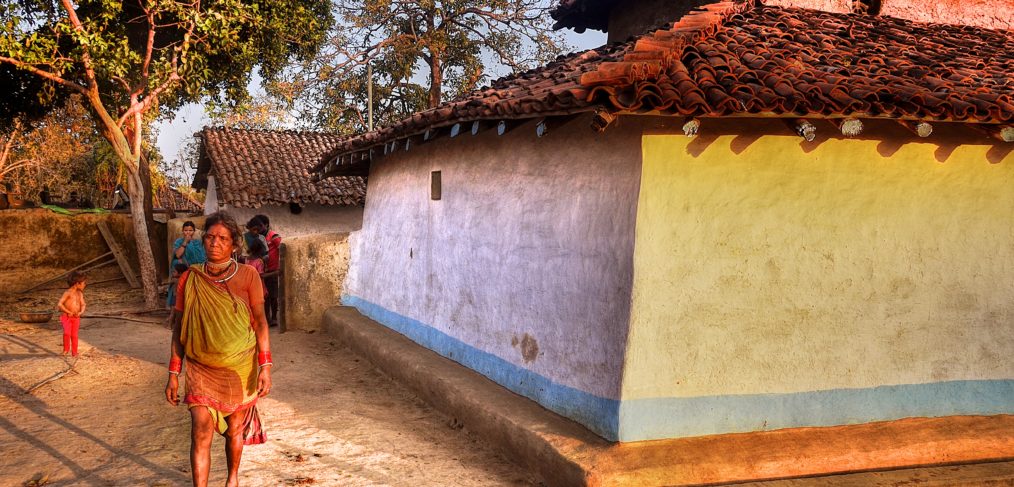
Gond and Baiga: A Tale of Two Tribes in Madhya Pradesh
A long time ago, legend has it that Baiga ancestors were created by God from the womb of Mother Earth. They became the keepers of the world. And, after God had finished creating the world, he offered to make them king. However, they declined because they wanted a simple life. “Give the kingship to our brothers, the Gonds”, the Baigas told God. He did so but also blessed the Baigas. “All the kingdoms of the world may fall to pieces, but he who is made of earth and is lord of the earth, shall never forsake it. You will make your living from the earth but without ploughing it, as you must protect the earth. You will never become rich because to do so would forsake the earth”. The Gonds revered the Baigas as spiritual healers and protectors, and invited them to preside as priests in their ceremonies. Yet, as per God’s blessing, the Baigas have never prospered financially.
The ancient Baiga tribe is indigenous to central India. Many of them can be found in the Mandla district, near Kanha National Park, in Madhya Pradesh. They live traditionally, in villages with mud huts and no electricity, completely untouched by modern development. They cook using primitive implements, cultivate and store their own rice, and brew potent toddy from the flowers of the sacred mahua tree. Throughout various phases of their life, Baiga women get tattoos on their head, arms, chest and legs, representing aspects of nature integral to the Baiga way of life.
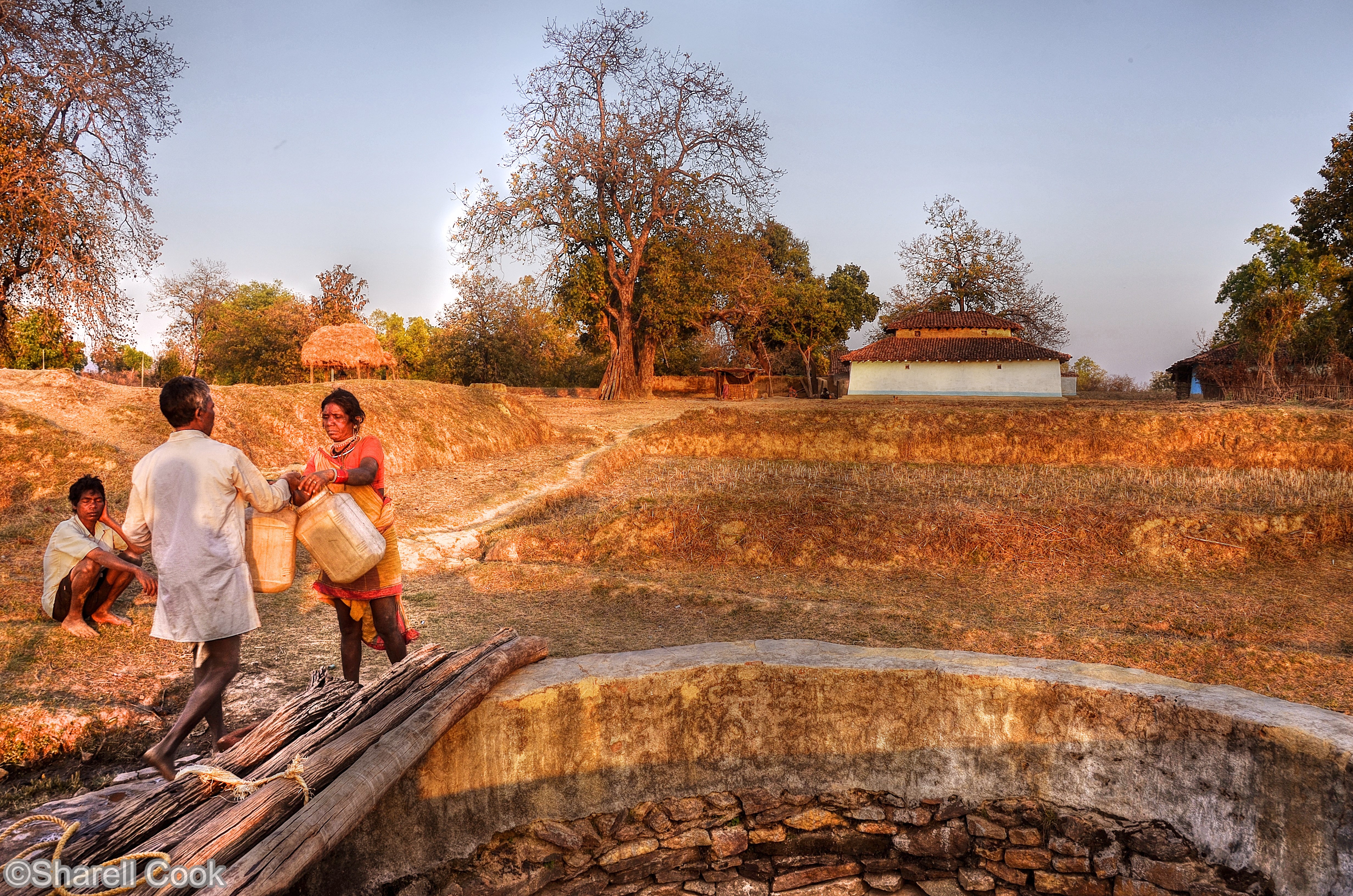
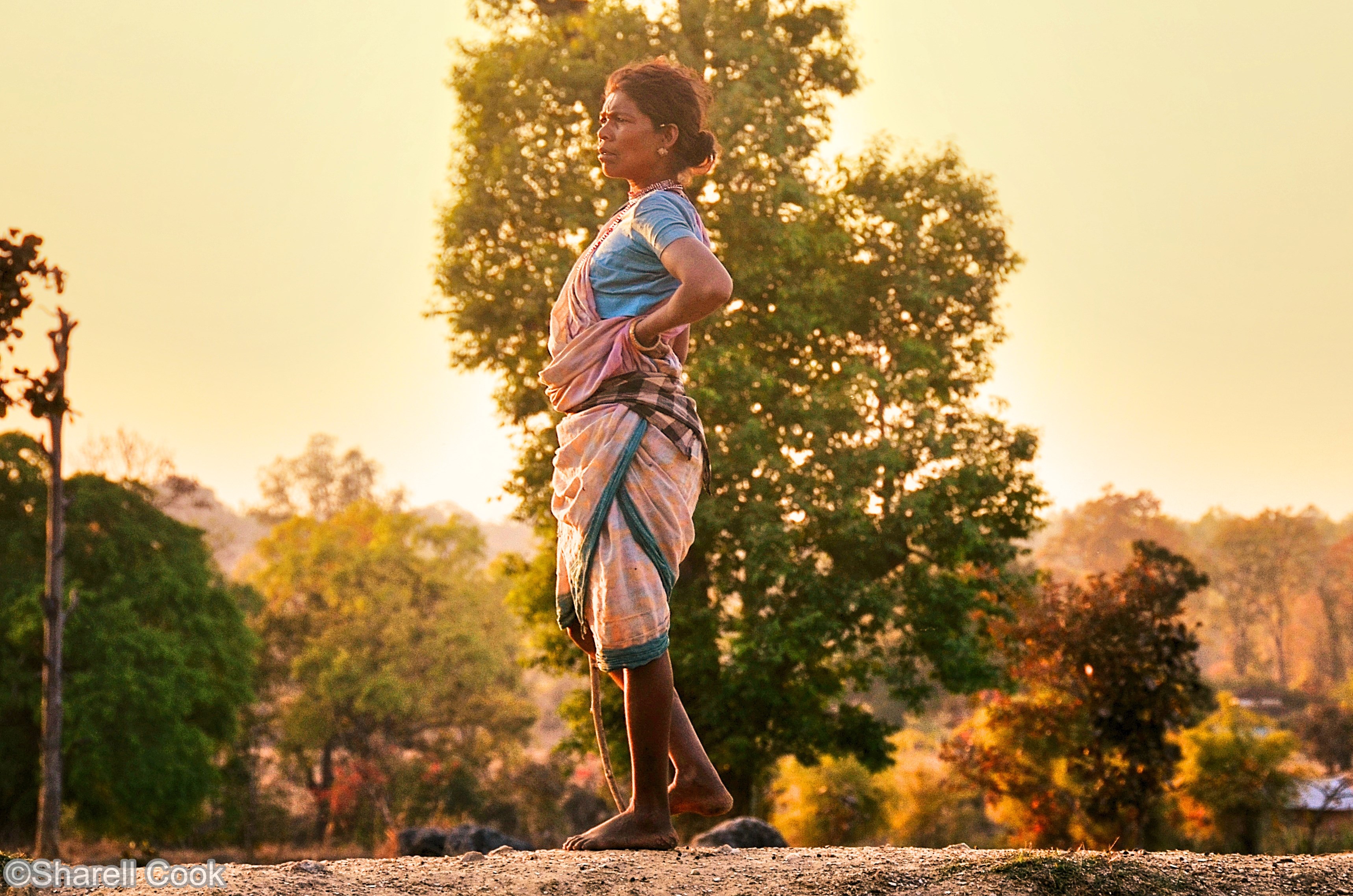
The Baigas still coexist with the Gonds. Yet, the Gond villages tell a different story of how this community has prospered while the Baigas have not. Artwork, which the Gonds have become well known for, has provided them with a lucrative source of income. Their homes have more facilities, often including electricity.
As I prepared to visit a local Baiga tribal village, while staying at Singinawa Jungle Lodge near Kanha National Park, my guide and naturalist told me we needed to get there well before sunset — that is, before members of the tribe became inebriated.
For many Baigas, the consumption of mahua toddy has become a part of their daily routine. A way to escape. It’s a concerning indication of the troubles faced by this tribal community.
As we got out of our jeep, the head of the village came over to greet us. He was a slightly built man clad in white, with a large sliver earring in one ear.
“He’s already started,” my guide and naturalist commented, as I caught a whiff of the alcohol myself. It became apparent that it wasn’t only the men who had been drinking, but women too.
A friendly young woman with a tribal tattoo across her forehead came over to us, carrying a baby. Aged in her 20s, it turned out that the baby was one of her five children. Which one was her husband? She pointed to a man lounging on a charpoi nearby. Lack of education and things to do in the village meant that having babies was a way to keep occupied.
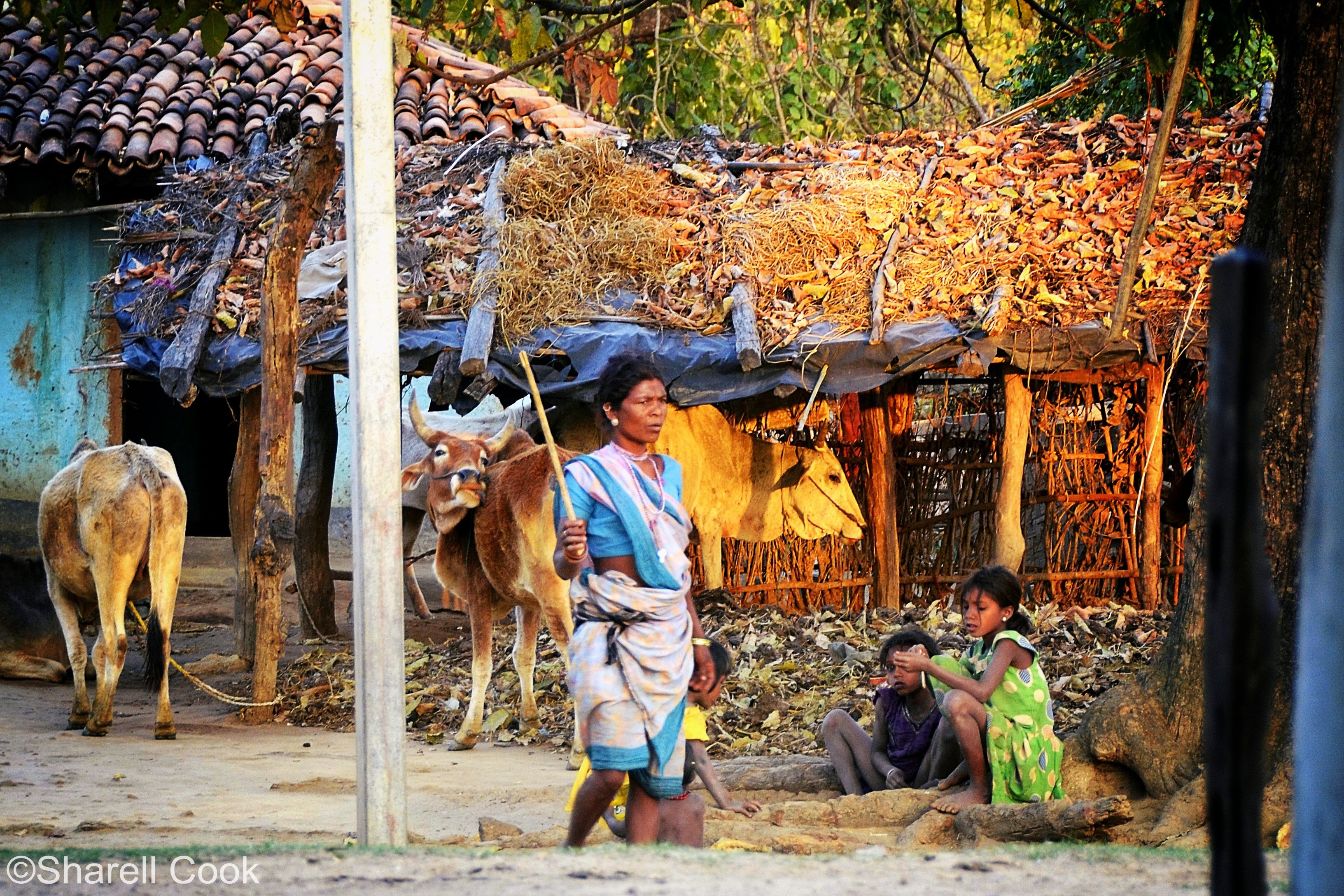
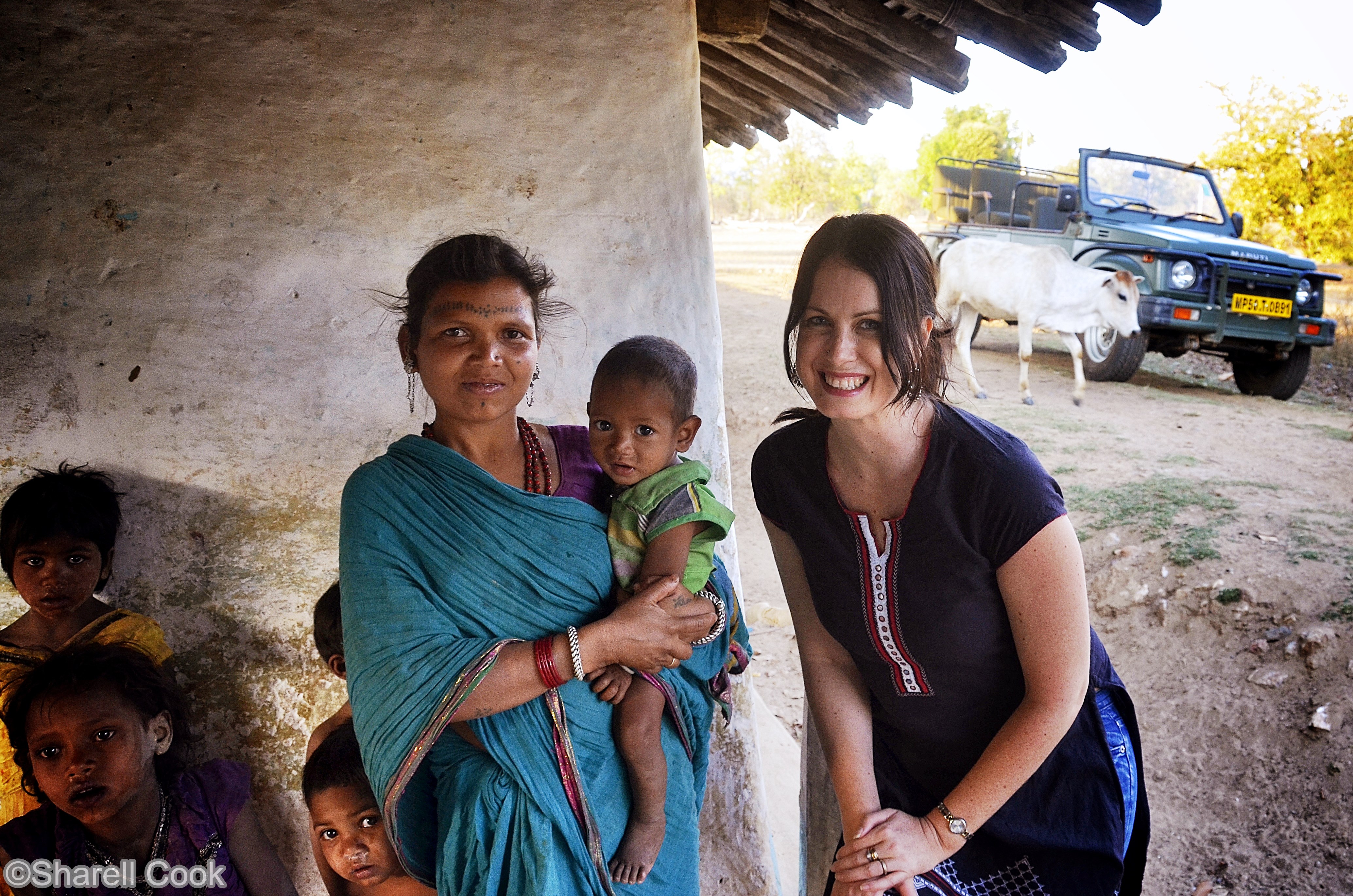
For the Baigas, India’s efforts to conserve its national parks and protect tigers has come at a huge price. For generations, they lived peacefully in the forest, in harmony with nature. However, following the establishment of the National Tiger Conservation Authority in 2005, thousands of Baigas have been forcibly evicted from Kanha National Park. The Authority wants to make the national park free of humans to maintain a safe habitat for tigers. However, ironically, it’s the Baigas that are facing quickly dwindling numbers and the threat of extinction.
The eviction from the forest has upended the Baiga tribe’s lifestyle, and left them feeling displaced and confused. The land that they’ve been relocated to is bare and unfamiliar. They are worried that their children may never learn about medicinal herbs in the forest. To earn a livelihood, some have had to become menial laborers in the area.
One man who has been helping the Baiga tribe is talented self-taught local artist and snake rescuer Ashish Kachhwaha. Brought up in Mandla, about an hour from the main gate of Kanha National Park, remarkably he now lives among the Baiga tribe just outside the gate. “I could speak their language, so it wasn’t difficult to integrate into their community,” he tells.
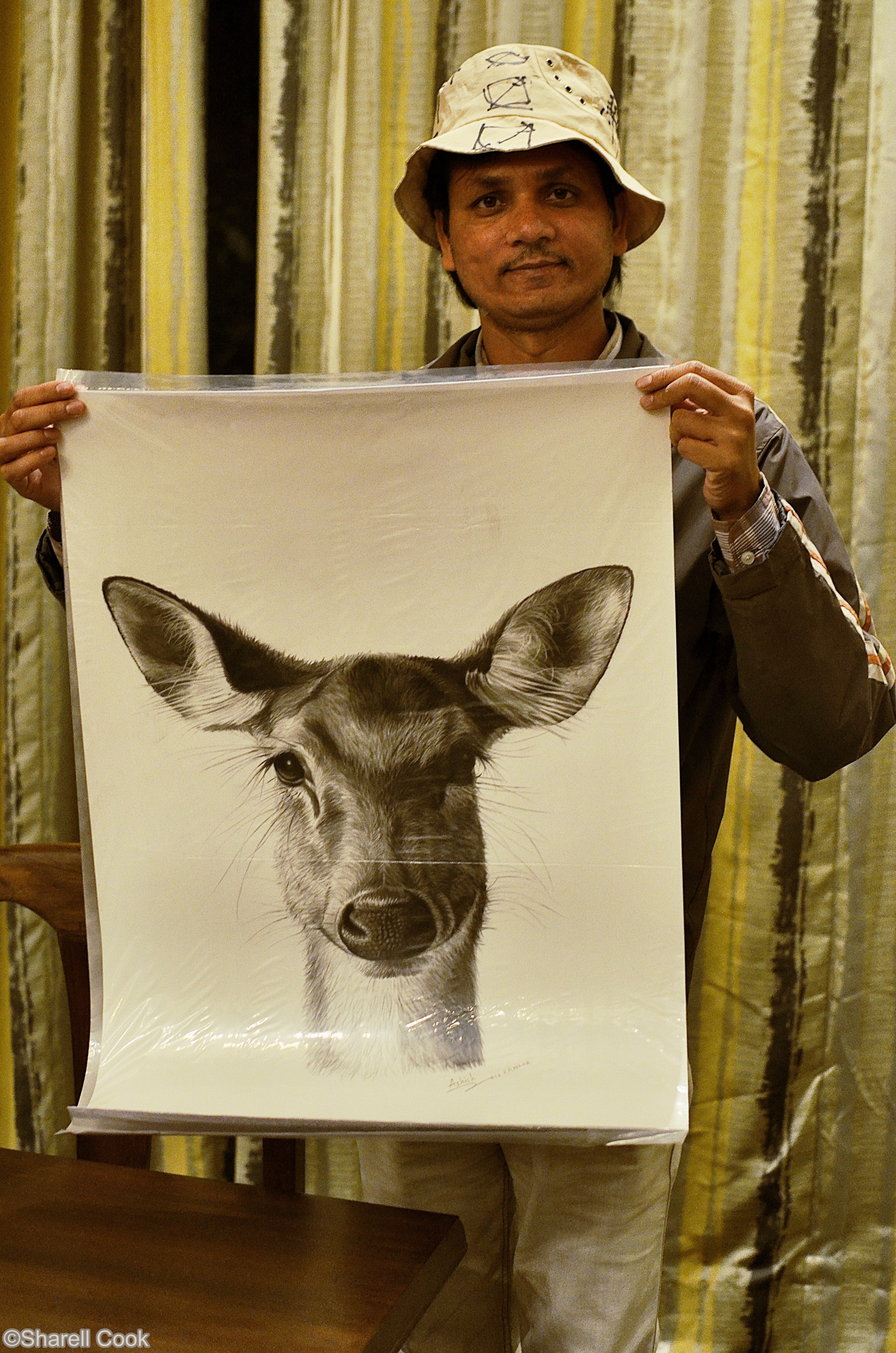
Ashish was attracted to the tribe by their peaceful relationship with nature. Their culture, and the pressure that the tribe is facing from the outside world, is reflected in his art. He has also devoted time to reinvigorating the tribe’s traditional dance, as a way to supplement their income. This dance, and the use of traditional instruments, had faded in the community. However, members of the tribe are now performing the dance for the public.
What satisfies Ashish about his work the most? “Whenever I make a painting of a Baiga, it brings me much happiness,” he says.
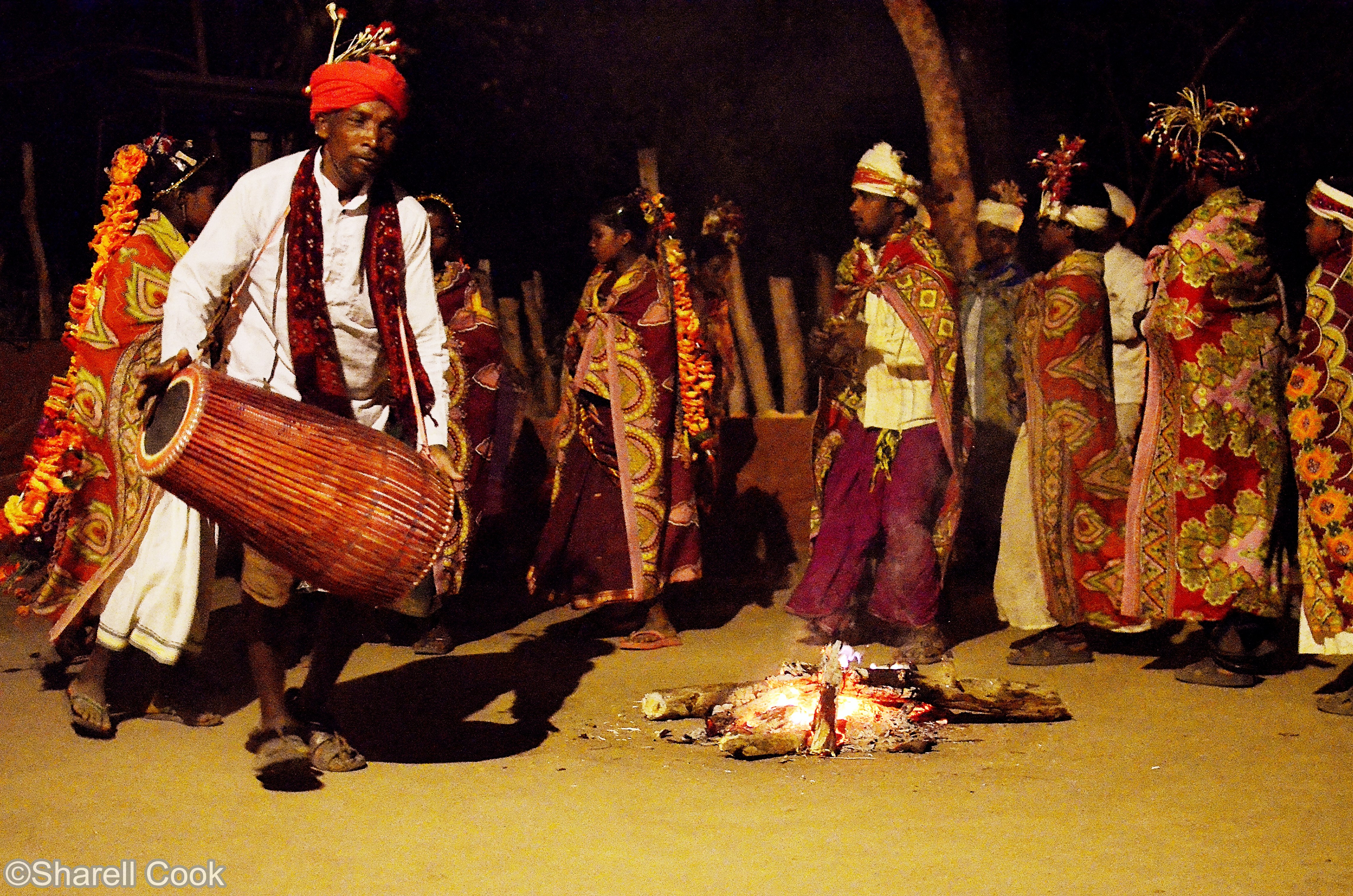
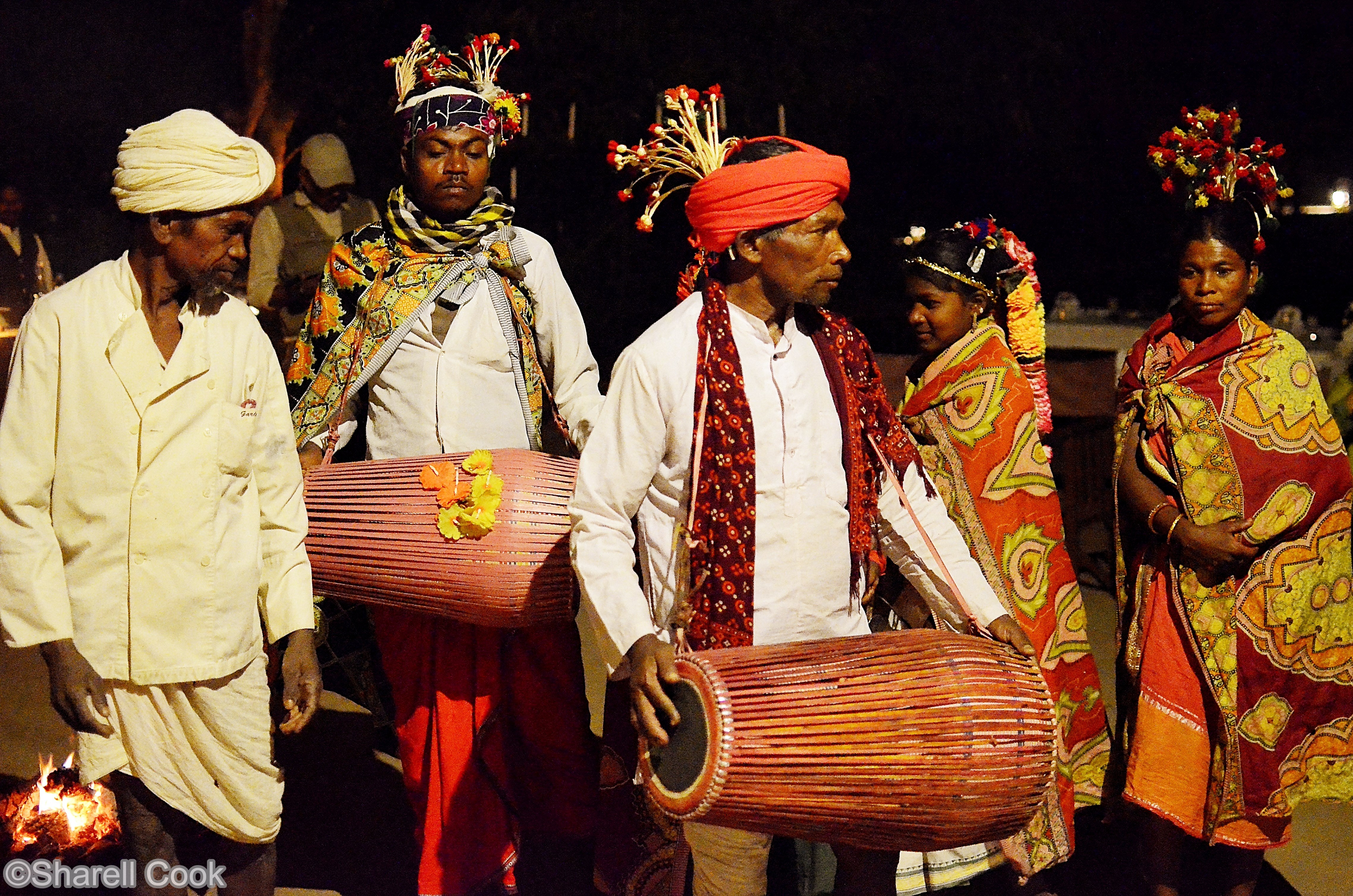
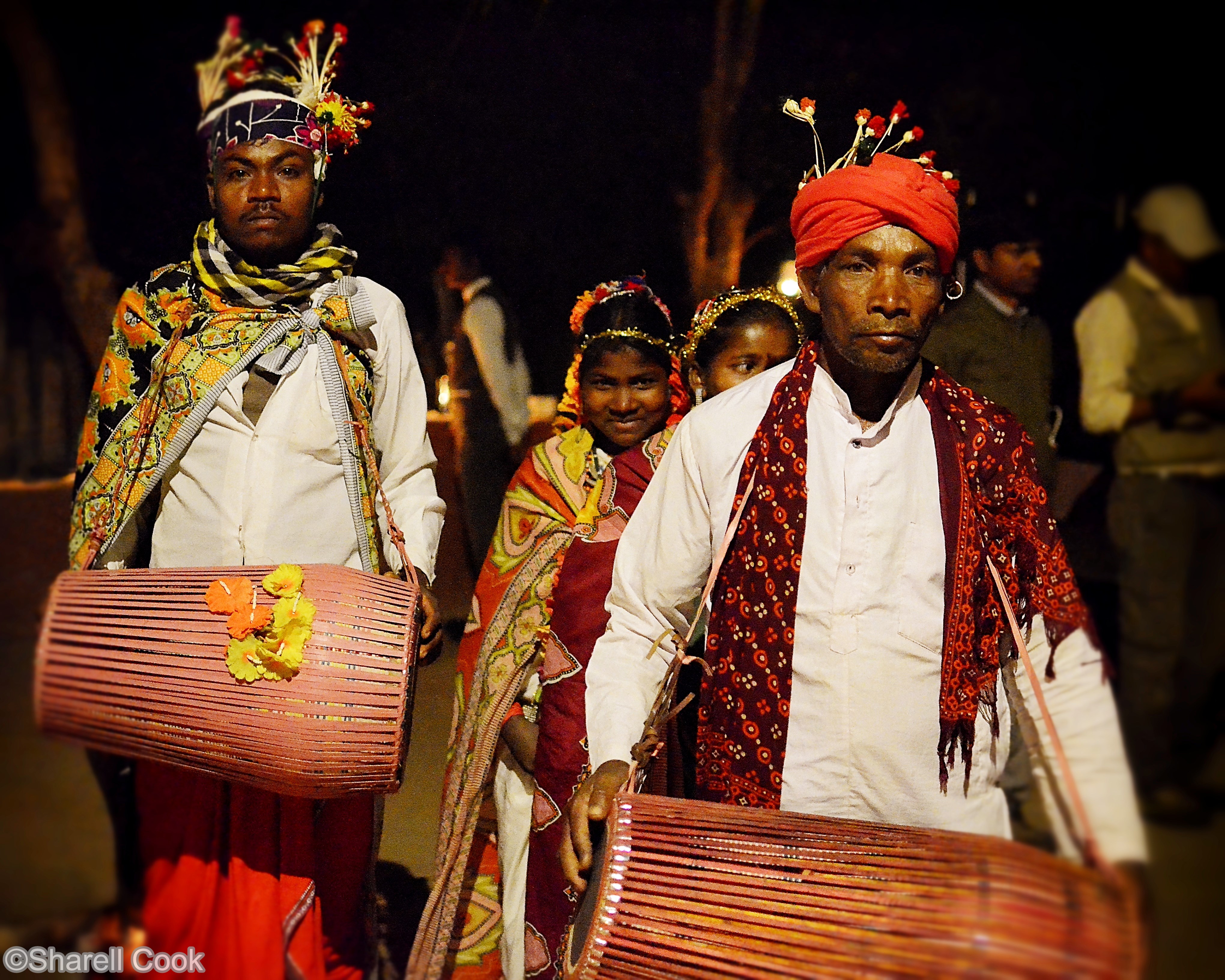
Singinawa Jungle Lodge offers the opportunity to connect with local tribes through visits to the Baiga tribal village that they support, and painting classes with a local Gond artist. Named Most Inspirational Eco Lodge of the Year in the 2016 TOFTigers Wildlife Tourism Awards, the lodge also has a unique Museum of Life and Art that showcases the region’s tribal culture.

Beautiful documentation….thanks for putting it together.
Thanks for reading and appreciating it. 🙂
Hi Sharell: True colors of India from its tribes, and what a wonderful people full of life and joy in their simple life.
Also, I must say that I am glad you are updating this blog again. Hope you will be regular in this… It is so interesting to see India from your perspective….
Thanks for the appreciate and encouragement. I do hope the inspiration will keep flowing!
Thank you sharel for bringing news from all over india. Love your work.
Thanks so much! 😀
Hi Sharell, May 2, 2017
Good to hear from you. You haven’t changed and doing good work travelling and studying Indian culture.
I am just finalizing the second volume of my biographical novel. The second volume known as Sojourn is an account of my life In North America since 1957.
Good luck to you and your spouse.
Brij Khare
Professor Emeritus
Californis State University
Hi Brij, wow, that is one book I would love to read! I’m sure it’s fascinating and insightful.
Heard from you after 2 long long years i guess,
where have you been lady??
Still in Mumbai. Just busy with other things.
Great stuff! Let me know when you’re coming to MP next time. You can stay with us in Bhopal anytime!
Thanks for the kind invitation. I haven’t been to Bhopal yet!
Dear Sharell, you must visit Bhopal. The tribal spirit is much celebrated here, not only in the amazing, world-class Tribal Museum, but also in the Indira Gandhi National Museum of Man, where the open-air part features tribal dwellings from all over India, and the indoor part also has a stunning collection of artifacts, and last but not least, at Bharat Bhavan, which has a permanent exhibition of tribal art.
This said, I would like to ask your permission to reblog this beautiful article on my own blog. Please let me know if that’s OK with you!
Hi Elisabeth, yes, I really must! I should’ve been there today actually because the MP Travel Mart is going on, but I have other work commitments unfortunately. I’ve heard wonderful things about those museums and I have been recommending them in my India travel articles. You’re most welcome to re-blog my article. I’m honoured. Thanks for your interest in it.
Thank you so much! I do not see a reblog button here but I’ll try the share button and see what happens. I hope it will send some folks back to your site, too.
I read about the MPTravel Mart in the paper today, but I don’t consider myself a travel professional. You, on the other hand… maybe next year?
Don’t worry, if all else fails, you can do a cut and paste of it, and put a link in back to my website. That should work hopefully. Yes, I’ll aim for MP next year if the travel mart happens again. I hope it’s in Bhopal.
I had to resort to the copy-and-paste method. Check it out: https://wordpress.com/post/elisabethkhan.wordpress.com/5561
Thanks again!
Elisabeth
So many educated westerners come here to study our “culture” and they all go back with useless details which will develop with time anyway, like toilets and civic etiquette and such. I was born in India in 1992 and this is the truth- please make people aware that our system is highly democratic, please make people aware to vote for candidate without criminal cases on them if you want to truly help India, but do it when you return to your homeland(DO NOT involve yourself in politics while in India, i fear for your safety), party dichotomy and nepotism are killing the country because people don’t check the history of the candidate before voting here, they only check his/her party. We are run by a criminal politician nexus here, the nexus is between the police, certain politicians and the mafia. This happens due to the voting problem at the individual constituency level due to lack of knowledge that we the people hold power over our government and not the other way round. Please in your own little way, if you can make a difference please please do, tell even 1 person about our REAL issue I will be grateful. Thank you.
P.S please please just stay out of politics while you are here, the nexus is real strong, the mafia keep killing off our real reporters, so now everyone is scared to report.
Hi Kramer, when I first came to India, I couldn’t understand why all these politicians with criminal records kept getting elected. And why so much corruption exists. Just vote them out! I naively thought. Then I realised that the rich have given up on politics and don’t care enough to get involved and vote (because it won’t make any difference), and the poor are bribed to vote for candidates who hand out 1000 rupee notes (probably 2000 rupee notes now, that 1000 ones no longer exist) to them on election day. So, that leaves the middle class as the only hope. I cannot stand politics, in India or my own country (Australia). I have removed myself from the electoral roll in Australia (since I’m not longer living there) and plan to never vote again. On the surface, India is a democracy, yes. But in reality it functions very differently, I know.
Yes, but that surface democracy is the truth, and we the voters have a job 🙂 to bring that democracy to the forefront. Well, I will be voting 😉 I think we can do much better than this especially in politics. And I think the answer to these problems are mainly education related, too many people to educate here. On a side note from a young person, please vote, its way better than a dictatorship or a king or a whatever, you get the gist. Its also better than foreigners ruling you, can say from past experiences and knowledge. Have no fear Sharell, we, the youth, shall lift India out of this, but like all good things it will take time. Do you know why our old ones have lost interest in politics? This is because of a long reign of the left wing, which kept telling us we are bad, inferior, shameful and cheap. and that we ill treat the poor etc etc, whereas the truth is simple, there are just too many people, uplifting them all equally is very difficult, as sometimes they refuse education and shun it. We do NOT ill treat the poor systematically, the poor are poor, they don’t have money in a capitalist system, and we don’t have enough money to go socialist. (Nehru tried socialism, didn’t work, don’t want to repeat it. We are doing much better under capitalism xD)
I will never stand for a government office personally, neither will I partake in charity (don’t believe in it, too many poor people, its unfortunate), but I will vote, that is the LEAST I can do for every freedom fighter who gave his life for this country. Stay safe, please don’t hate on us , we know our toilets suck hahaha.
What a fascinating post, Sharell. It is true Gond art is getting a reputation all over the world, but it is sad to learn that the Baigas suffer from the efforts to preserve tigers.
Yes, unfortunately we hear a lot about tiger conservation, but not how its affecting the local villagers. Glad you enjoyed the post!
It is so painful to hear things like you have brought to notice. Tribals everywhere in the world are under pressure because they don’t have support. To protect so called the Govt. is bringing disgrace to the natives. One must understand that they are one very important part of the Micro ecology and without them the nature in incomplete
helo Sharell may 2018 Belgium
Sharell wat a great surprise ….. while checking some facts on the internet on the Baiga tribes noticed a vey good story written by Shalle Coock..
We met ,if you still remember very briefly at the Patna fair while having breakfast together.
Lasy month I travelled from Bumbay through Chattisgarh and Odisha to Puri.Quite a long distance.During this trip I had the opportunity to visit several tribes (including the Baiga) who live in those regions and participated in some festivals. I experienced some extremely hot temperatures during this season (april).
I must say that I was very impressed by the cultural backgrounds of some of those etnic groups and the way they maintain the balance in their natural habitat.They are really part of it . I also noticed lot of new roadworks and was just wondering how on the longer term this would impact their life ?
it was very nice to notice that you are still very active and in good shape.I keep travelling in indie because for me it is the most wonderfull continent.
Hi Guido, what a fantastic surprise to hear from you! Of course, I remember you. I have wondered from time to time what you’ve been doing, and I’m really happy to hear you’re still having adventures in India. It’s great to be in touch again. Do let me know if you’re in Mumbai again. We can meet up!